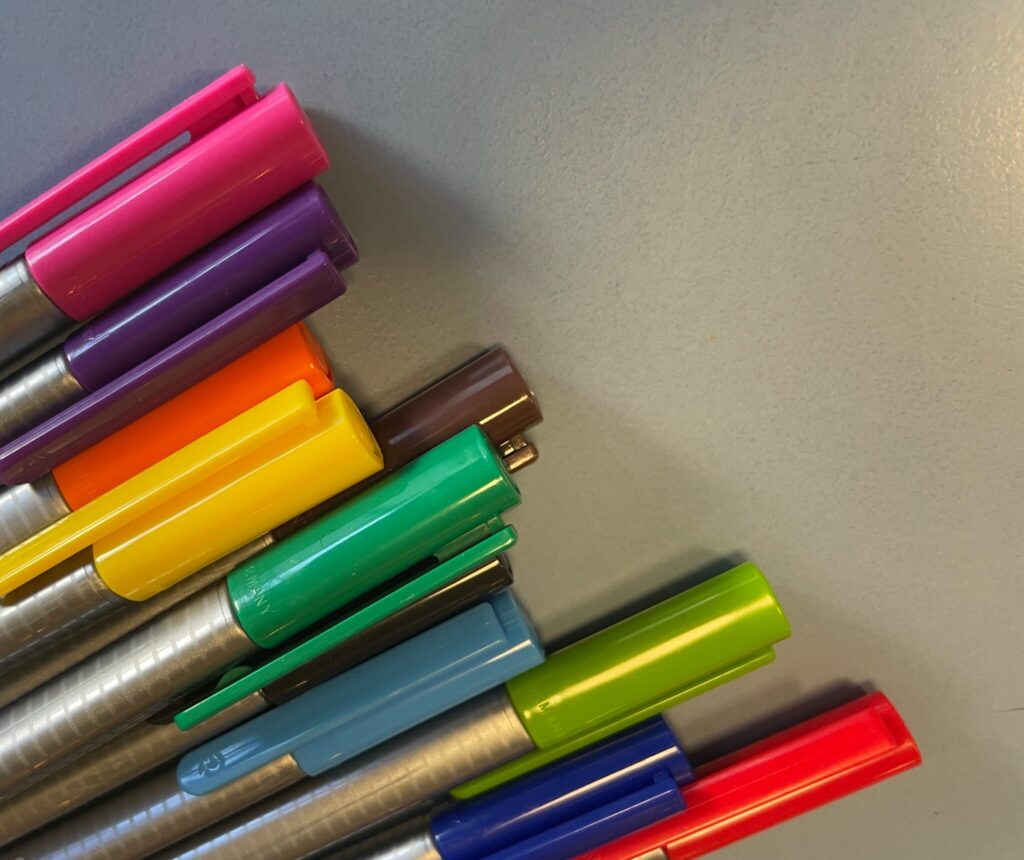An image of the Scripor alphabet. This shows a circle of cells. In the cells, colors are displayed colors represented by a combination of dots similar to braille.
Experience from the conference “Reha for the blind” in Poland
Rolf Lund, Researcher at Eikholt, recently attended the conference The Chance Foundation’s international conference, Reha for the blind, in Poland. One of the most important topics he takes home after this conference is the Scripor alphabet, a tactile color alphabet. Rolf Lund believes this could revolutionize how the visually impaired relate to colours.
What is the Scripor Alphabet
The Scripor alphabet, named after its creator Tudor Paul Scripor , is a unique, universal system that enables the visually impaired to read, write, identify, recognize and distinguish between colors using tactile symbols. Each color is represented by a combination of dots in a cell similar to the Braille alphabet, but with more dots to cover the entire color spectrum.
An image of the Scripor alphabet. This shows a circle of cells. In the cells, colors are displayed colors represented by a combination of dots similar to braille.
Image shows the tactile color alphabet, known as the Scripor alphabet, named after its creator Tudor Paul Scripor
Why are colors so important?
Color is one of the first ways children learn to understand and structure their world. Colors are used universally as a simple way to convey information – from traffic signs to marking dangerous situations. Unfortunately, the visually impaired have not had access to this important source of information, which creates barriers in everyday life.
The Scripor alphabet breaks down these barriers by giving the visually impaired access to the same information that sighted people get through color. This contributes to increased independence, security and participation in society.
Image of Pens with different colors
How does the Scripor alphabet work?
The alphabet is based on a system of 10 dots: three columns and three rows, as well as an orientation dot to avoid confusion with braille. Each color is represented by a specific combination of dots, while adjacent cells are used to show hue, saturation and intensity.
By following the principles of universal design, the system represents:
The primary colors red, yellow and blue
The secondary colors orange, green, purple
Tertiary color brown
The achromatic colors grey, white and black
The significance of the Scripor alphabet for visually impaired people
The Scripor alphabet can be used in a variety of contexts – from food and clothing to sports equipment and toys. This makes it easier for the visually impaired to choose products, navigate everyday life, and participate in activities with a greater degree of independence and security.
The alphabet has a short learning time, and can be introduced early. In fact, blind children can learn the color alphabet before they learn Braille, which opens up a whole new learning perspective.
The Scripor alphabet gives the visually impaired greater opportunities to participate on equal terms in a world where color plays an important role. The system is tactile, which makes it well suited for people with combined vision and hearing impairments.
Through this simple but effective solution, products, services and everyday life can be made more accessible to millions of people worldwide. This is a big step towards a more inclusive future.

